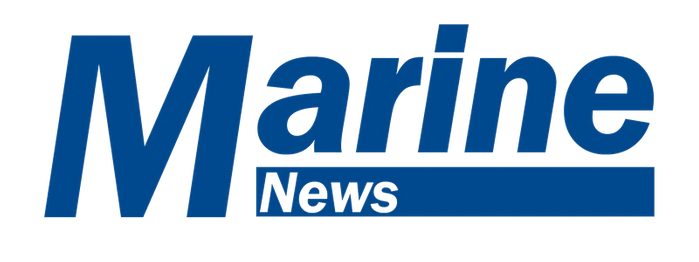Clean Ports
A Better Approach for Emission Reduction at US Ports
In finalizing the Clean Ports program requirements, legislators must consider the maritime industry’s realities and challenges.
By Robert Murray, president of NAWE
Last August, the U.S. Government passed the Inflation Reduction Act (IRA), a piece of legislation that allots $3 billion to decarbonize our ports. Known as the Clean Ports program, the legislation includes funding to help ports adopt zero- or near-zero emissions cargo handling equipment. Marine terminal operators (MTO) are supportive of reducing emissions to meet environmental goals and create healthier workplaces for port workers, and encourage legislators to consider the realities and challenges of the maritime industry in finalizing program requirements.
Steep costs, unrealistic equipment replacement timelines
Switching to zero- or near-zero emissions port equipment is one of the core components of the IRA. However, the timelines outlined by the program don’t allow for a staggered transition from existing technology to cleaner options. Forcing MTOs to make a sudden transition to new equipment limits the return on the investment on the resources they already have in place. A sudden transition also removes viable equipment from service before it reaches its end of life. We recommend that the EPA maximize project contract windows and clarify when MTOs must spend, claim and liquidate all funds.
In addition, the costs associated with zero- and near-zero equipment are significant. For example, a single diesel tractor can cost around $150,000. By contrast, an electric tractor and its charging infrastructure could cost close to $600,000. Such drastic price differences drive up the overall costs, which can strain equipment acquisition timelines. It should also be noted that electric equipment is not a comparable substitution for diesel-powered versions. A tool’s battery life is limited and might not have the ability to run an entire shift without needing to recharge.
With these challenges in mind, it would be beneficial to amend the program to allow for staggered transition approaches to switching to electric cargo handling equipment.
Competing priorities
Meeting emission reduction goals outlined by legislators is top of mind for MTOs, but they’re also balancing competing priorities. One example is invoicing for detention and demurrage charges. As presently outlined, the detention and demurrage billing regulation would require specific updates to electronic booking systems, which is both time and cost-intensive. These competing costs and timelines make it difficult for MTOs to determine which regulations to prioritize and can prevent them from complying with either one. To ensure the success of MTOs in meeting Clean Ports initiatives, legislators must adjust timelines that give them more flexibility and enable them to achieve the proposed goals.
Navigating manufacturing delays
Beyond the costs of adopting new equipment, another complicating factor are the realities of the current manufacturing landscape. As of now, there’s a two-year wait for zero- or near-zero container handlers—simply because of production timelines. Smaller ports will have a harder time getting ahold of new equipment since they often lack the connections and financial resources to front the cost for equipment that takes years to arrive.
Not only are timelines an issue, but there’s also the problem of sourcing American-made versions—a provision of the IRA. Though domestic manufacturers are currently partnering with battery suppliers to build specialized electric port equipment, there are still a number of heavy-duty pieces of equipment that aren’t available in the U.S. The international manufacturing of these tools disqualifies them from the program. Even the iron, steel and other materials aren’t made in the U.S. at the scale needed for transitions of this size. If the legislation is intended to spur rapid adoption of new port tools, it should allow ports to source domestically unavailable equipment outside the U.S. until domestic on-shore manufacturing ramps up.
Lack of utility infrastructure
Relying more on electric equipment also means that ports will have a greater reliance on electricity. Therefore, the utility infrastructure at ports will need to be adapted so that ports can charge their vehicles and draw more electricity from the grid. Making these needed changes isn’t within MTOs’ purview. In order to be prepared for transitioning to all-electric fleets, ports and utilities need to rapidly develop and restructure their infrastructure master plan and implement capital improvements. Funding from the IRA should also account for these costs.
Key changes for effective port emission reduction programs
Although MTOs are eager to support efforts to reduce emissions at ports, they need the support of government leaders in implementing program changes that enable a smooth transition to electric equipment. On the broadest scale, the legislation should reconsider the timelines laid out to update equipment and implement other related changes. MTOs could also benefit from additional support and tax credits to facilitate their transition to zero- and near-zero emissions equipment and account for the substantial investments. Current timelines are unrealistic given the proven challenges with costs and manufacturing.
The government may want to consider expanding support for producing more electric cargo handling resources on U.S. soil. While the desire to create jobs and boost the economy is a great long-term goal, it’s unreasonable to expect ports to source all their equipment domestically right away. Instead, government leaders could consider a tiered approach that allows ports to source their equipment overseas with a plan to shift to buying American-made versions as manufacturing ramps up.
I encourage MTOs and other stakeholders to share their concerns with the EPA about the current form of the Clean Ports program and advocate for more reasonable timelines and support to ensure the program’s long-term success.
About the Author:
Robert Murray is president of the National Association of Waterfront Employers (NAWE), the voice of the U.S. marine terminal operator (MTO) and stevedoring industry in Washington, DC. NAWE promotes marine cargo efficiency, security and health, a clean environment, international trade, and economic growth through advocacy, education and industry cooperation.
